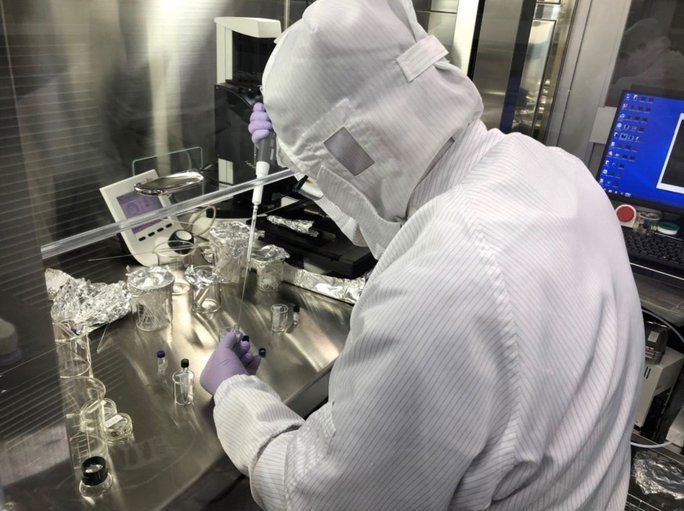The seeds of life forms, remarkably similar to those on Earth, exist on the surface of the Dragon Palace – the asteroid Ryugu, which Japan has successfully sampled.
A new analysis of the Ryugu meteorite sample – known as the “Dragon Palace” in Japanese mythology – reveals that it contains a variety of “prebiotic organic compounds”, including several amino acids that living organisms on Earth use to create essential proteins necessary for regulating biochemical reactions and forming structures such as hair and muscle.
According to Space, these findings lend further credibility to the hypothesis that the fundamental components needed to kickstart the development of life on Earth originated from asteroids and comets.

A Japanese scientist analyzing samples from the “Dragon Palace” – (Photo: JAXA).
“The presence of prebiotic molecules on the surface of the asteroid, despite the harsh environment caused by solar heating, ultraviolet radiation, and cosmic radiation in high vacuum conditions, suggests that the surface particles of Ryugu have the capability to protect organic molecules” – said lead author Hiroshi Naraoka from Kyushu University.
The existence of these materials on the surface, rather than merely mixed within the asteroid’s material, enhances the significance of the “Dragon Palace”, which has long been known to be rich in “seeds of life.”
Dr. Naraoka further explained: “These molecules could be transported throughout the solar system, potentially dispersing as interplanetary dust particles after being ejected from the upper layer of the asteroid due to impacts or other causes.”
This increases the possibility that the seeds of life reached planets like Earth: It is not necessary for the asteroid to collide with the primordial Earth; rather, the dust particles from it could be scattered everywhere by the continuous impacts of the young solar system.
On Ryugu, there are not just ordinary organic materials but also forms of “prebiotic molecules” that are formed when liquid water is present, adding a more “advanced” component to the process of life formation.
“So far, the amino acids found on Ryugu are mostly consistent with what has been observed in carbon-rich meteorites that have been exposed to significant amounts of water in space” – said co-author Jason Dworkin from NASA’s Goddard Space Flight Center.
Scientists worldwide continue to analyze the Ryugu samples, which have been divided among various groups in different countries, in search of substances closer to DNA and RNA, aiming to reinforce the increasingly realized theory: We have cosmic origins.
The new research has just been published in the journal Science.


















































